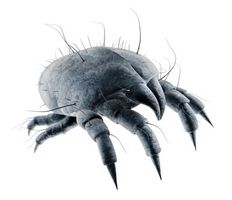Cold cases: allergies in the cold season
After the season is before the season. The air is finally free of pollen and the next pollen flight is already on the horizon: The purple alder begins to bloom in mid-December and can cause a dampened mood at the punch stand. However, a blocked nose, sneezing attacks or breathing difficulties can also be signs of the very common but often unrecognized and underestimated house dust mite allergy. Symptoms are often mistaken for a cold or flu, which is why it is important to have prolonged symptoms checked out by a doctor and, if the cause is allergic, to treat it early and avoid contact with the triggers.
Global warming and extreme weather conditions influence the pollen season in Austria. This year clearly confirmed this once again. "Although the pollen season was only slightly above average overall, the long dry periods, which were interrupted by heavy rainfall, resulted in a rollercoaster of stresses", says "Although the pollen season was only slightly above average overall, the long dry periods, which were interrupted by heavy rainfall, resulted in a rollercoaster of stresses". The heavy rainfall repeatedly brought the pollen count to an abrupt end. The pollen count then quickly increased again. These ups and downs caused exceptionally high pollen counts for mugwort, for example. This year's birch pollen season was different. It started off average, but then led to particularly high pollen concentrations and ended much earlier than usual. Berger: "If global warming continues unabated, these weather extremes will not only occur at ever shorter intervals in future, but will also give other plants the opportunity to establish themselves in Austria."
Christmas season marred by purple alder
One example of plants that adapt is the purple alder (also known as Spaeth's alder). This ornamental tree is particularly widespread in urban areas. It has Siberian genes, making it winter-resistant and blooms in mid to late December. "Because the purple alder belongs to the birch family, a potential cross-reaction can also cause symptoms in people allergic to birch and hazel pollen - so be careful when visiting Christmas markets!" warns Berger.
House dust mite is in high season in winter
Another allergy trigger is also in high season during the cold season: the house dust mite. The eight-legged, light-sensitive and microscopically small relative of ticks and spiders is the most common allergy trigger after pollen - and often the cause of bronchial asthma. "It's not the mite itself that triggers allergies, but the proteins in its droppings and shell that have a high allergic potency," says doctor Berger. "When the heating is turned up in the cold season and the humidity decreases, many animals die. The allergens are stirred up and combine with the air we breathe." Morning sneezing attacks, watery eyes, itchy skin rashes and even severe breathing difficulties therefore accompany many allergy sufferers in the cold season.
Allergic or cold?
The symptoms of a house dust mite allergy are similar to a common cold and are often confused. The expert advises: "If symptoms persist, you should think of an allergy and have the symptoms checked out by a doctor." The allergy risk questionnaire from the Austrian Pollen Information Service can provide initial guidance.
Allergen avoidance and acclimatizing the immune system to the allergy triggers are at the forefront of therapy. Consistent implementation of the measures is important for successful therapy. The patient organization IGAV provides useful tips for everyday life with allergies and informs about the excellent and now very patient-friendly treatment options.
Tips for mite reduction
- ventilate the room diagonally for 5 to 10 minutes 3 to 4 times a day, air humidity 40-50%, room temperature max. 20°C
- Cover mattresses, sheets and upholstery with special mite-proof covers (encasings).
- Remove clothing outside the bedroom and living room, as dander is the main source of food for mites.
- Use a vacuum cleaner with an allergen filter. Even better: damp mopping.
More tips here (Avoiding allergens in the living area)
Link tips:
www.polleninformation.at
www.allergenvermeidung.org
www.allergie.at
About the Pollen Information Service
The Austrian Pollen Information Service provides doctors, allergy sufferers, the media, politicians and interested parties with free information on the current pollen situation and pollen data. The short and medium-term forecasts, an exact daily pollen forecast and a countdown of when and in which region pollen levels can be expected can be found on the Internet at www.polleninformation.at. The latest news is also available via email newsletter, Facebook, Telegram, Signal, Instagram and as a free Pollen+ app. More here.
Go to news overview

